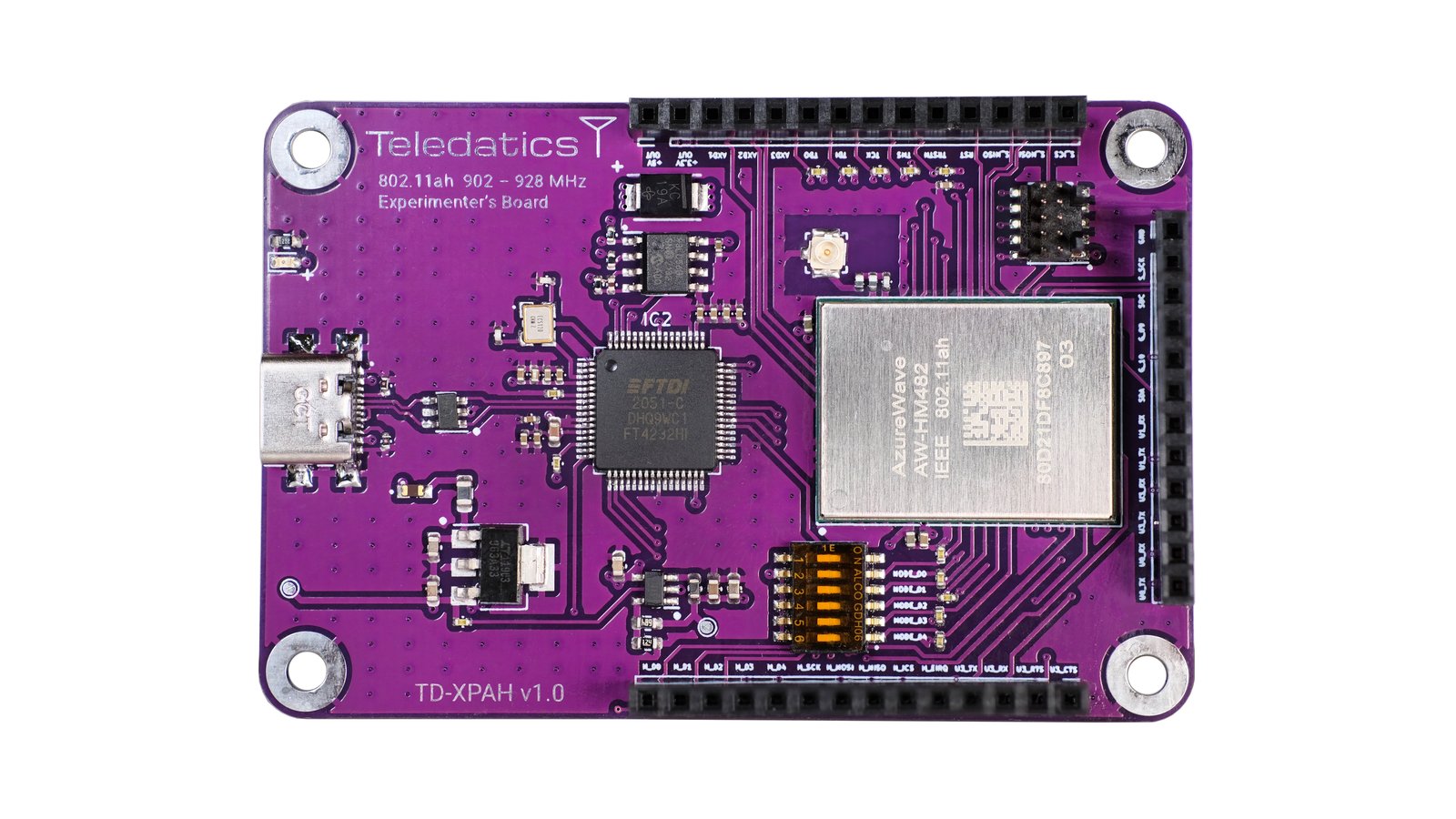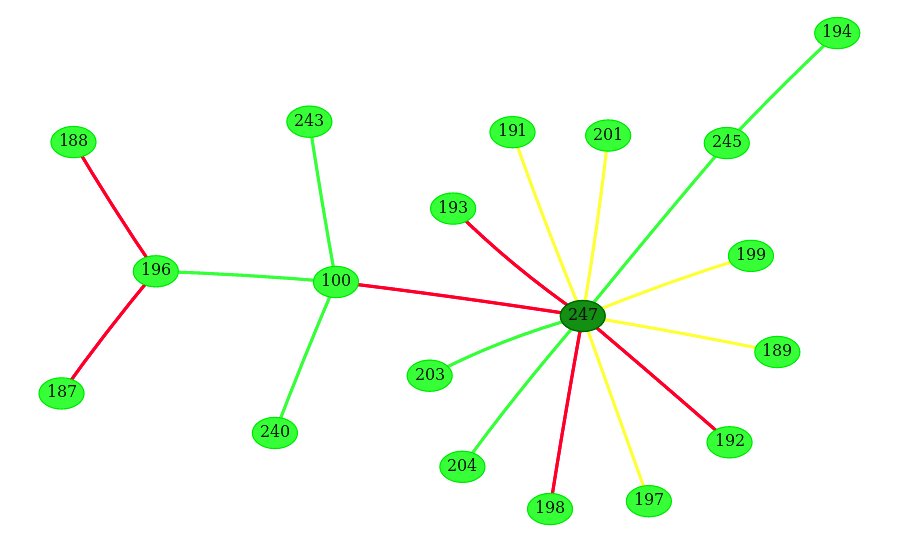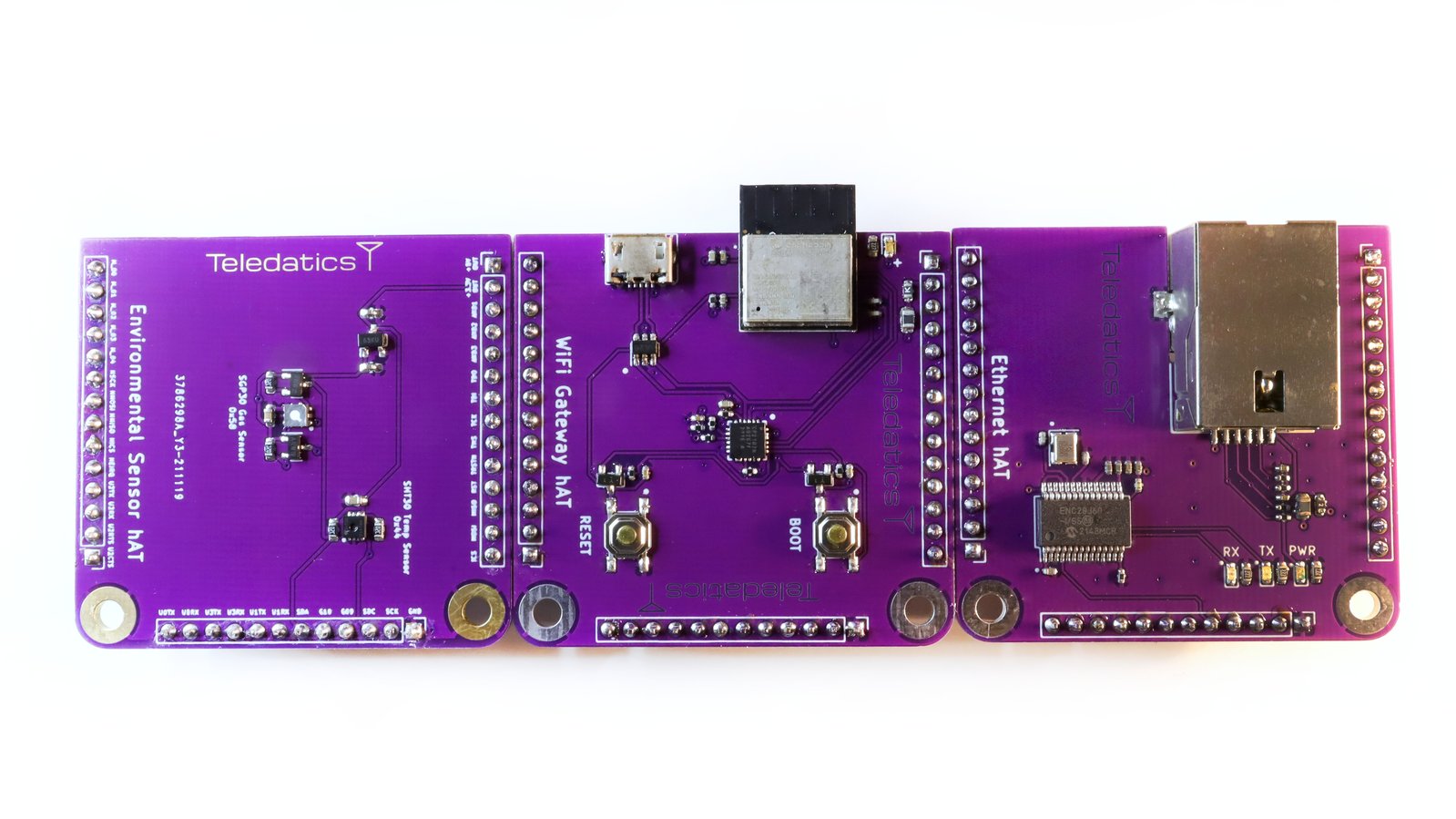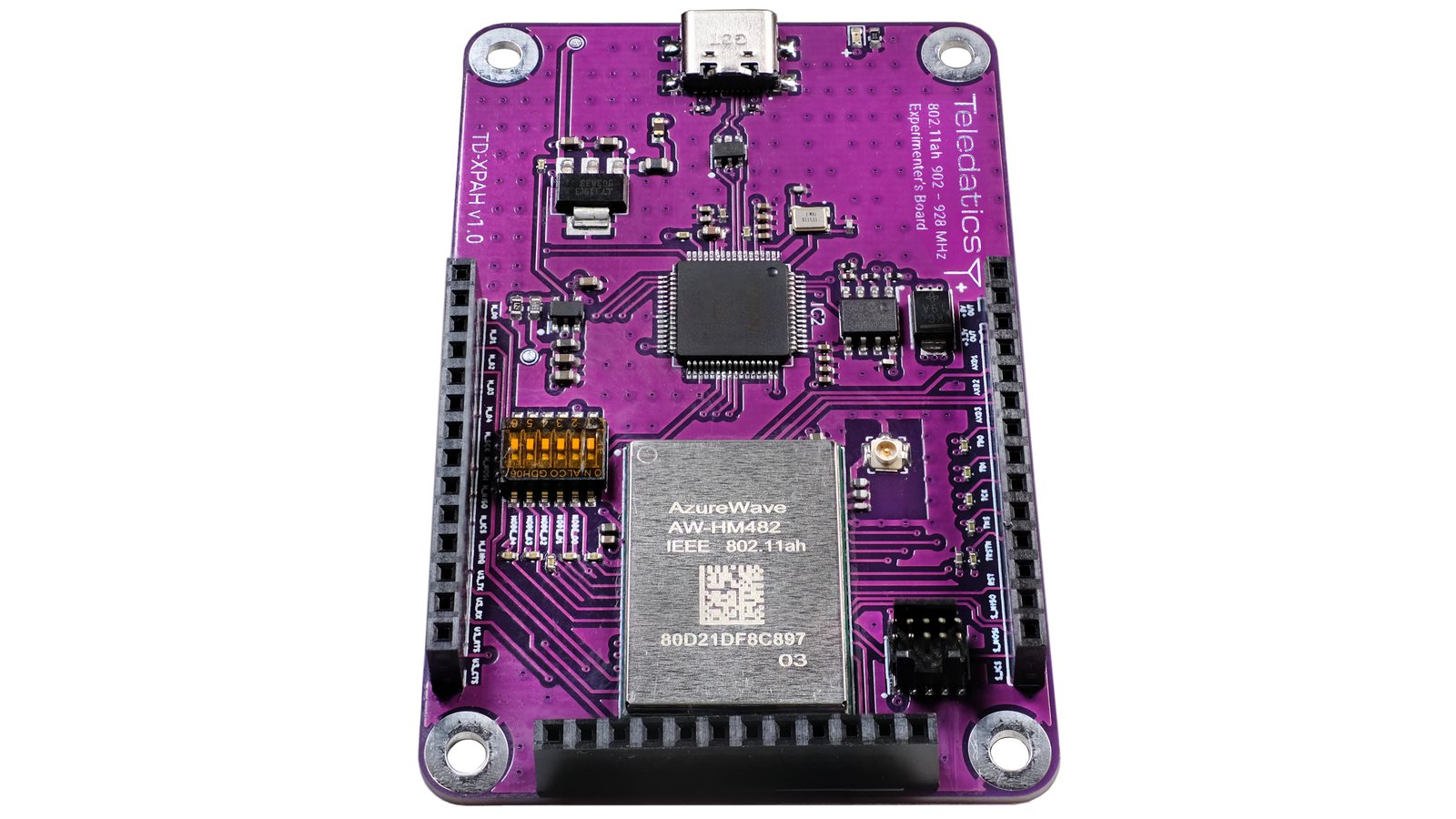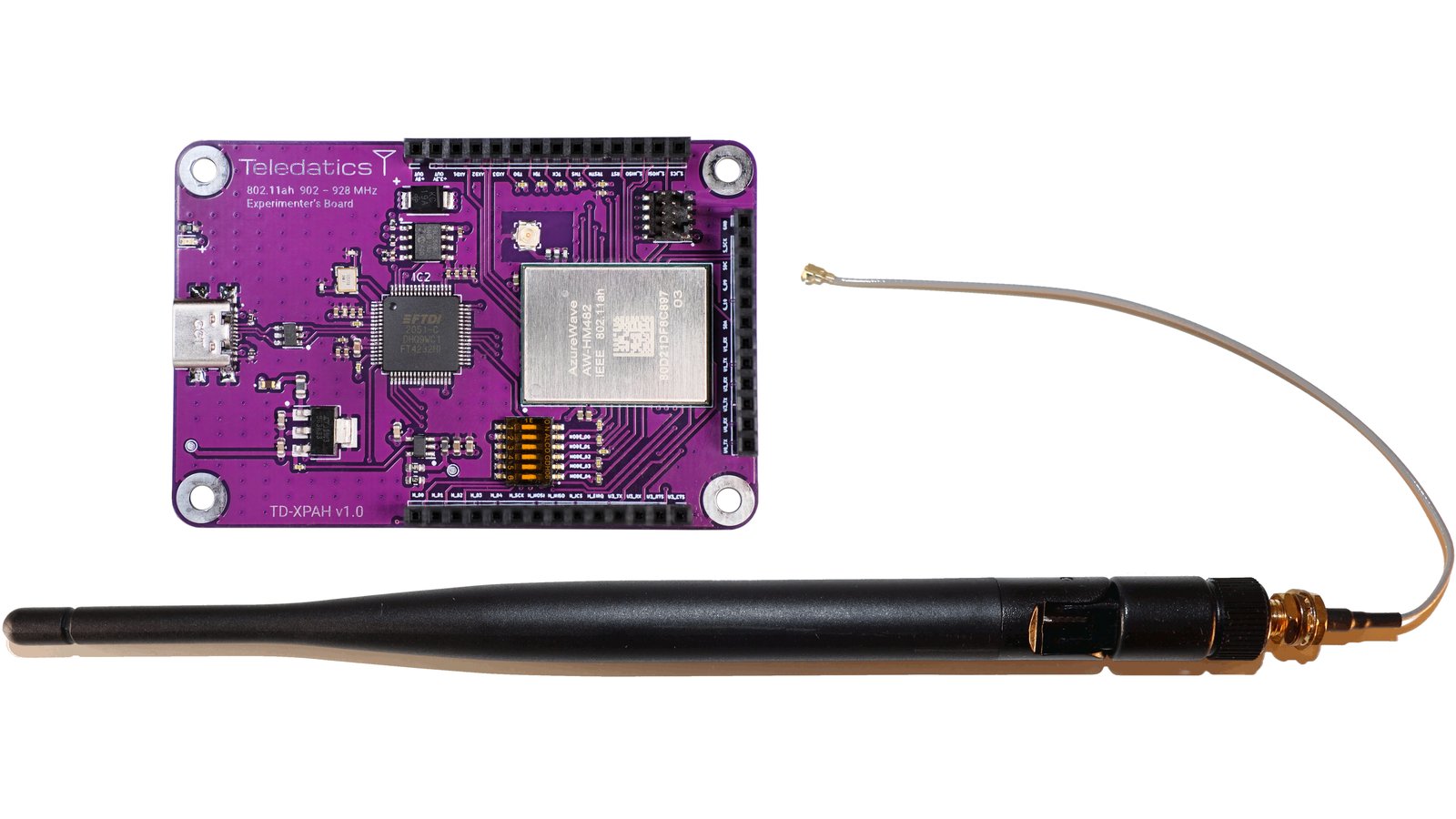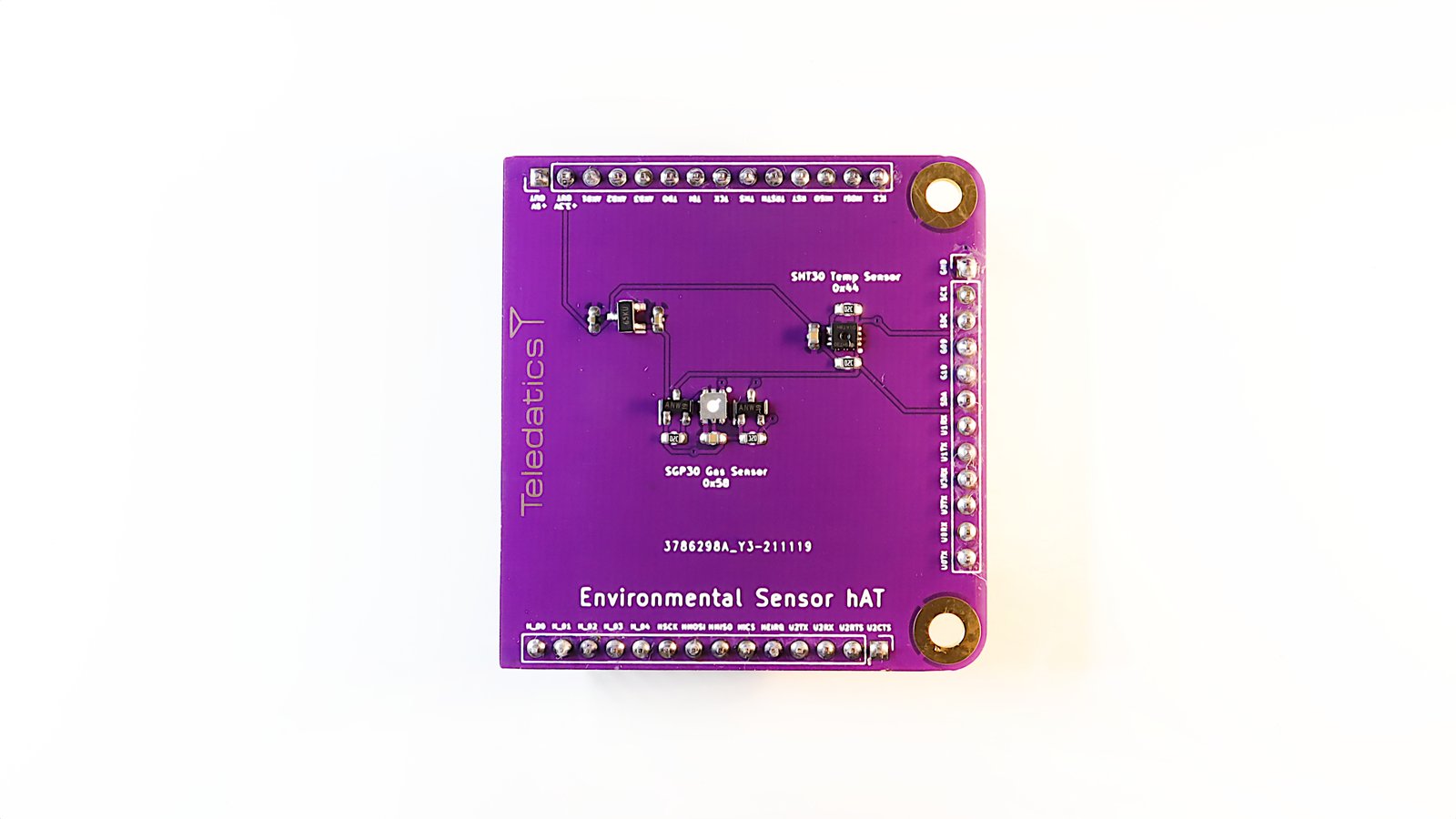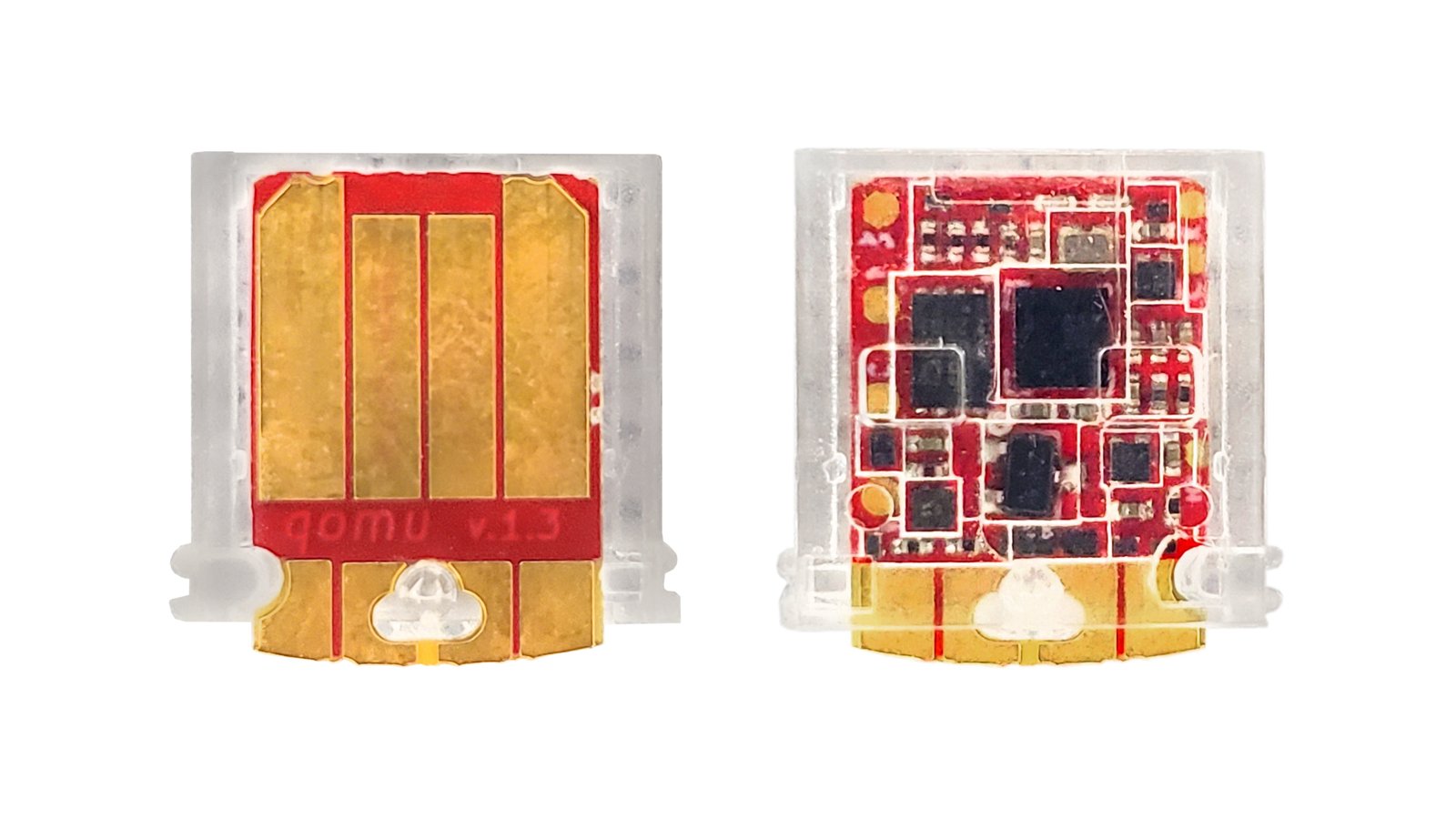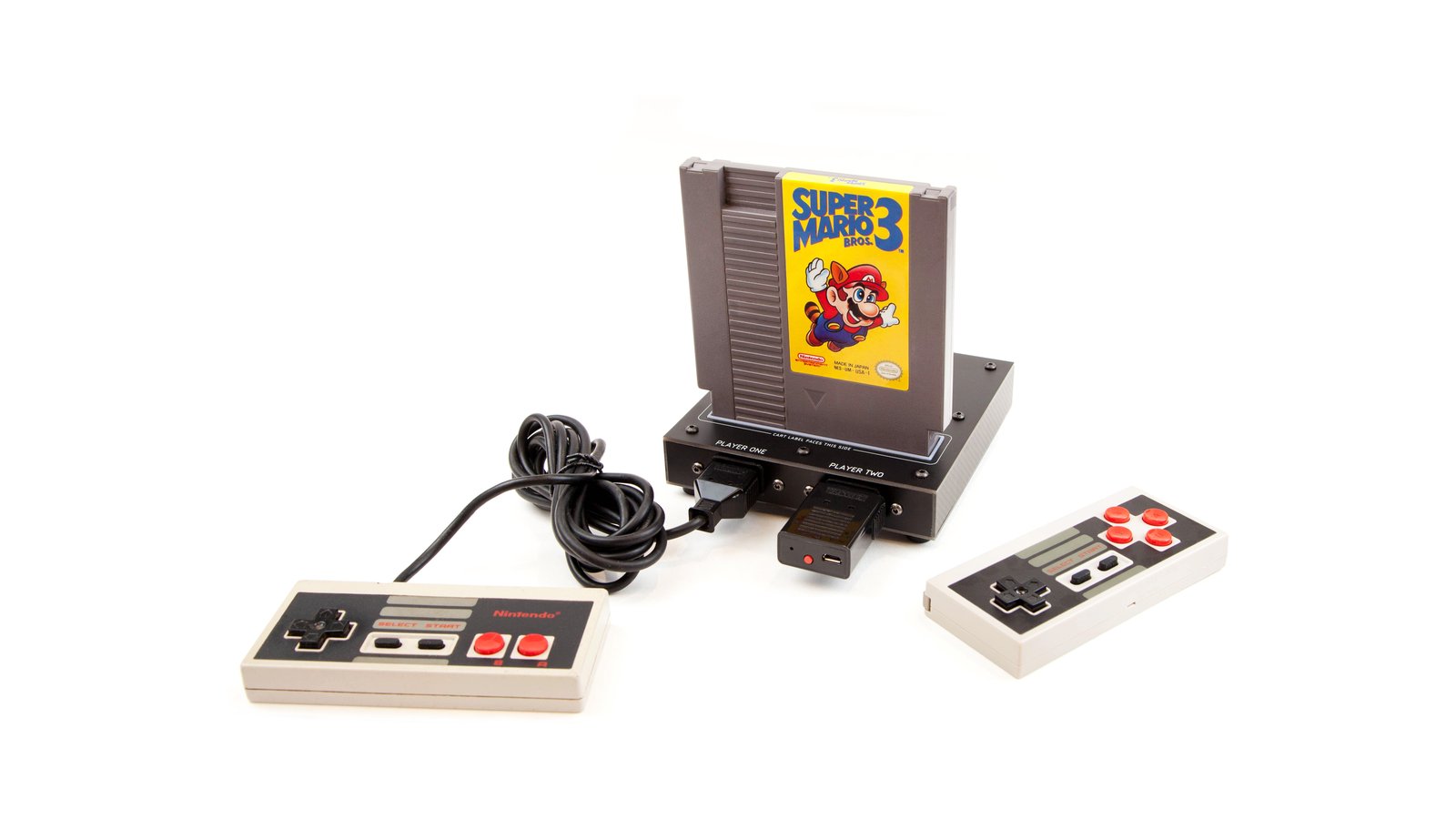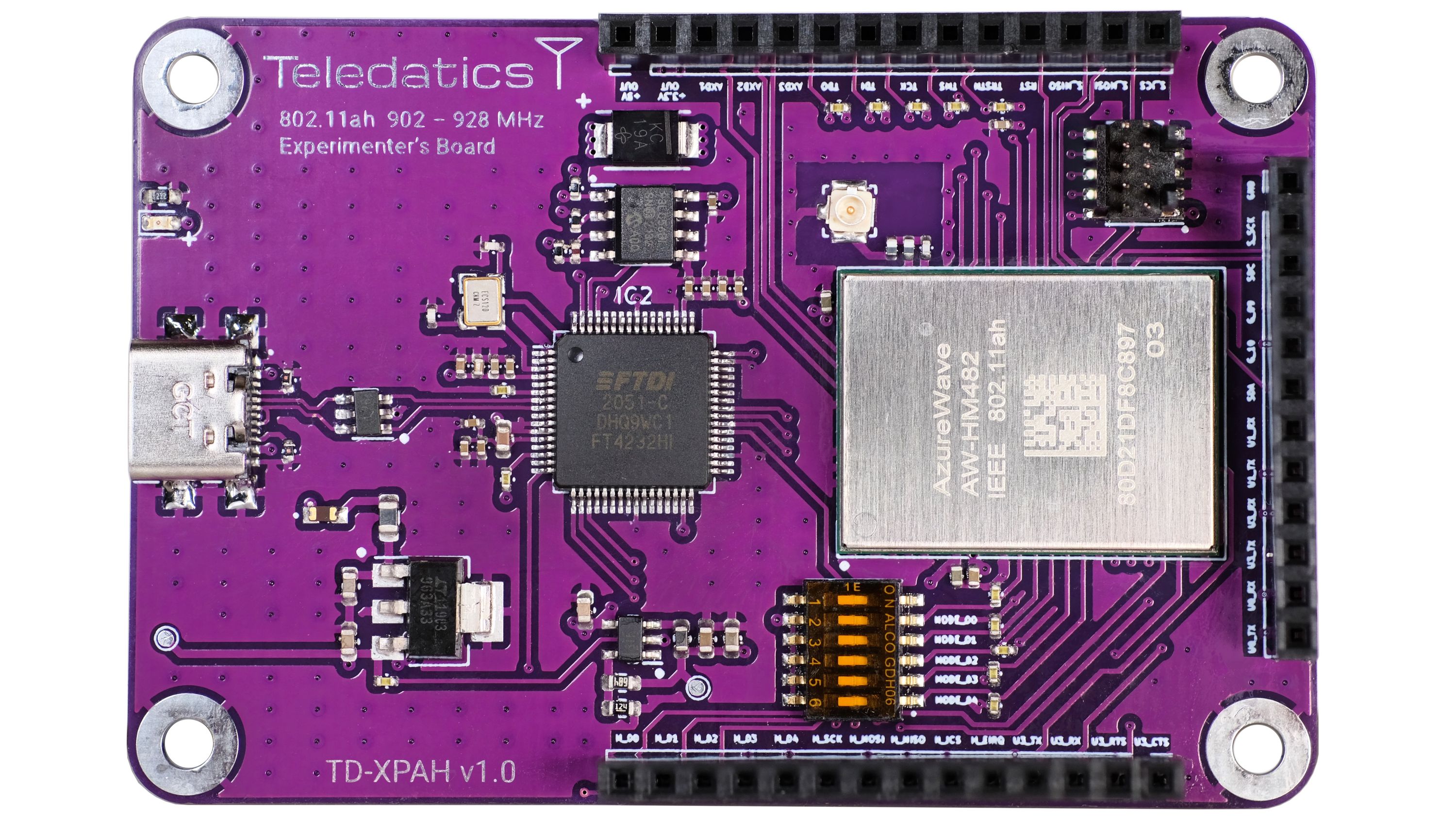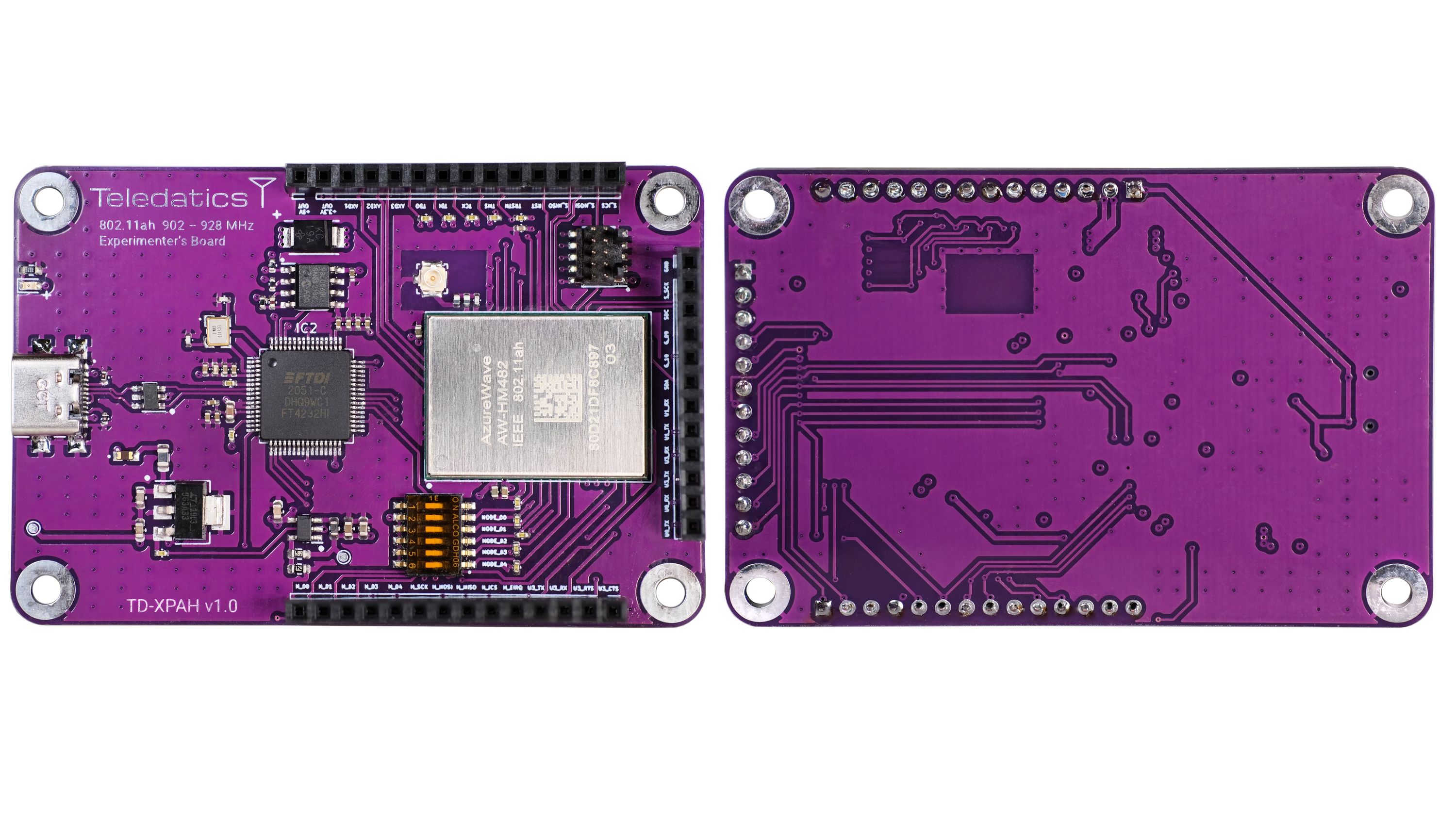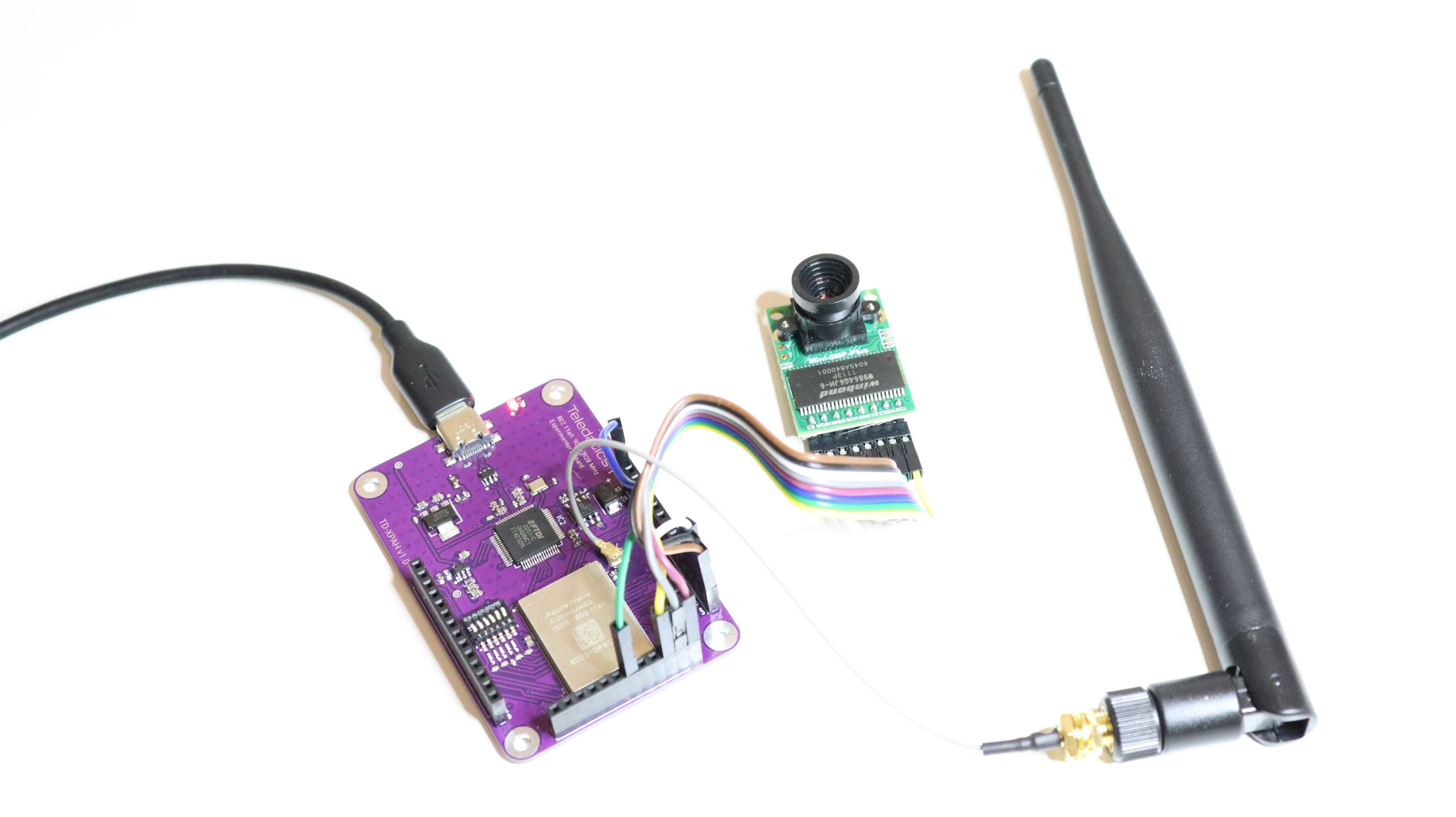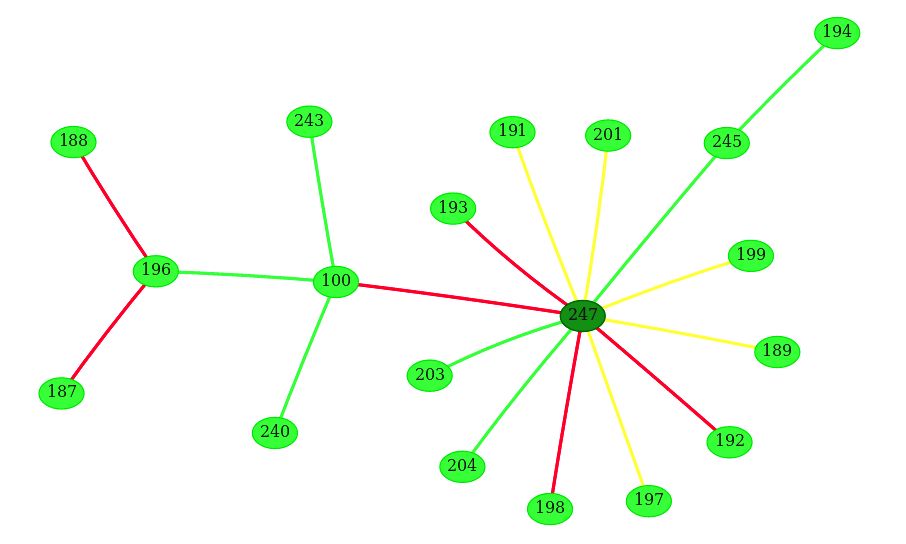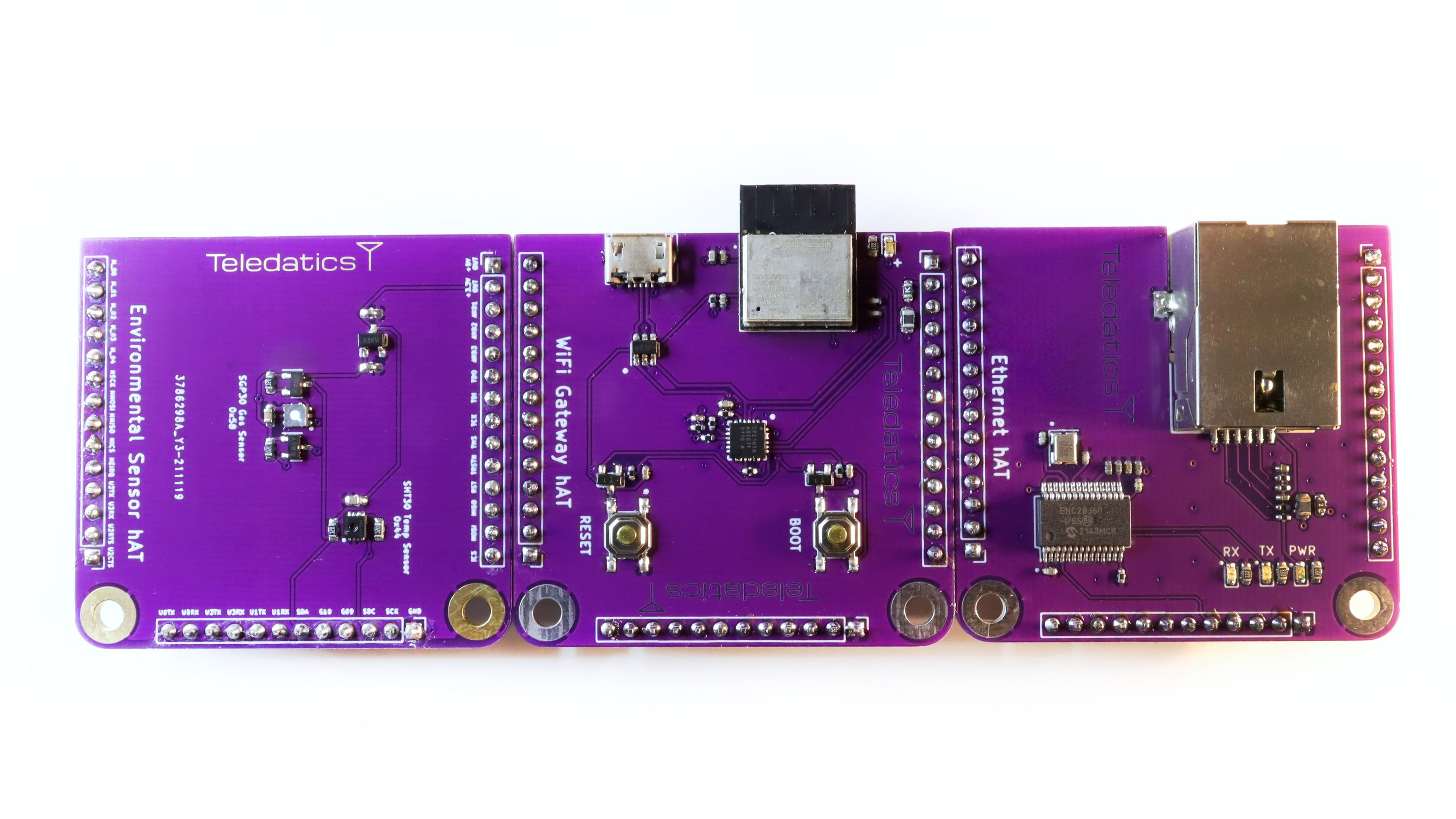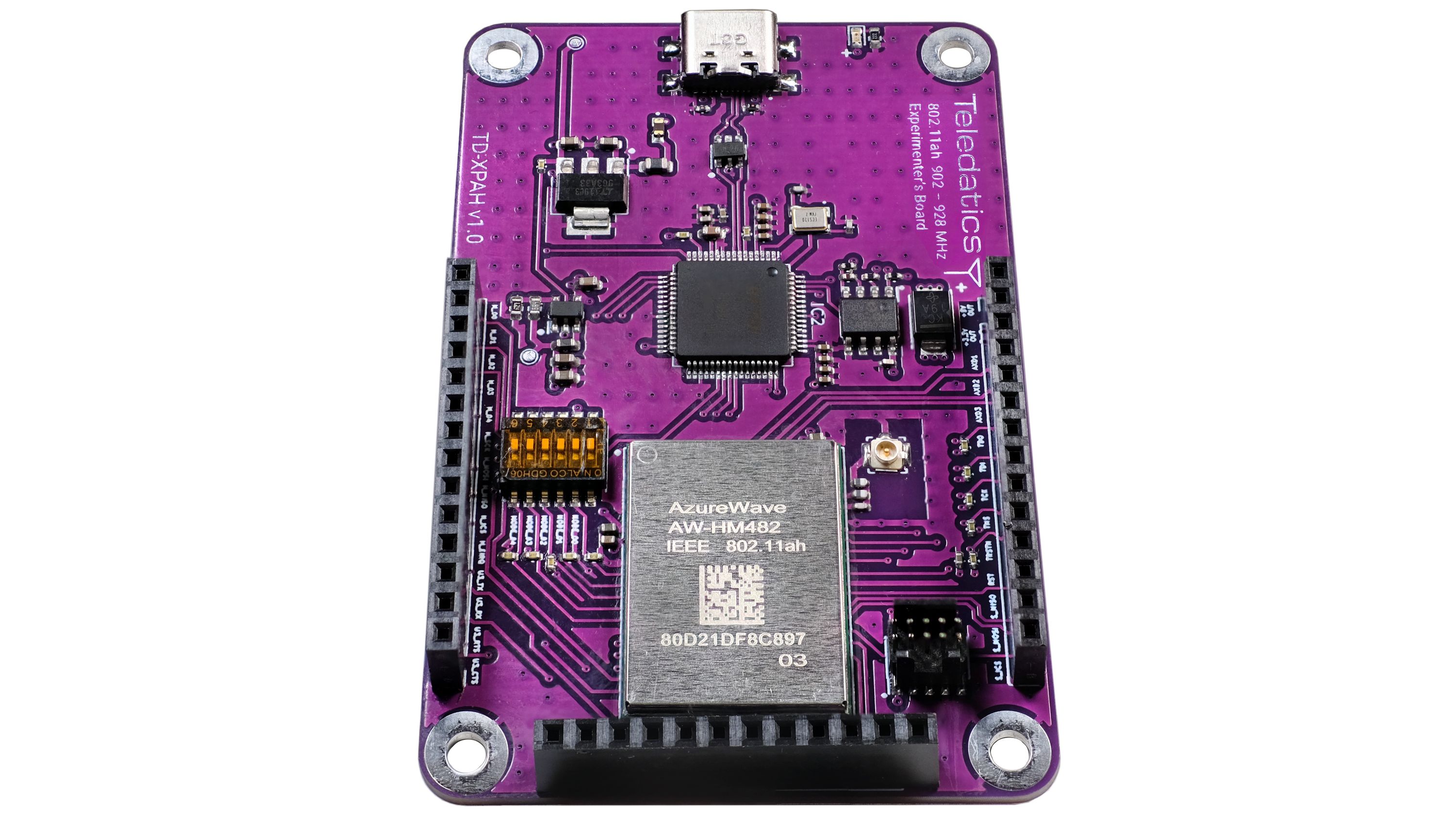Halo TD-XPAH is the first open source open hardware IEEE 802.11ah Wi-Fi development platform available to creators, makers, engineers and experimenters. The IEEE 802.11ah Wi-Fi protocol builds on Wi-Fi 6, adding the ability to reach a minimum of one kilometer (one-half mile) from access point to client. 802.11ah is designed to support up to several hundred clients per access point via Restricted Access Window, a form of Time Division Multiple Access (TDMA). It also supports 802.11s mesh networks where distant nodes can link to and hop through nodes closer to home to extend range further.
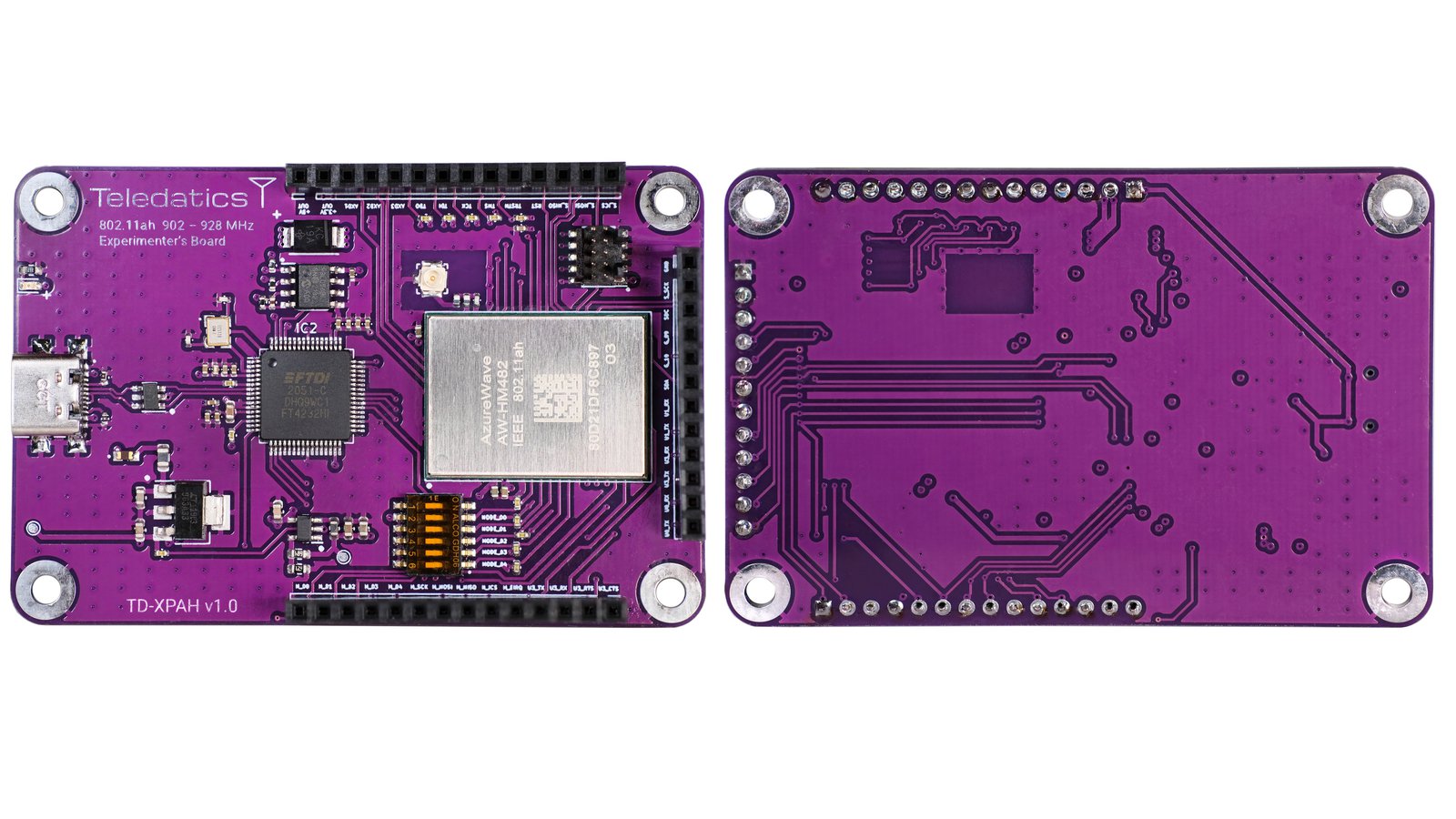
The TD-XPAH board supports two modes of operation: a USB dongle mode attached to an external system and a standalone mode. Since 802.11ah is a Wi-Fi protocol, the TD-XPAH supports TCP/IP and works with standard networking. Our open hardware accessory board Kicad "hAT" template can be used to create custom hardware for remote control, monitoring, and sensor systems that extend existing wired or wireless networks. We include three hardware hAT designs with the TD-XPAH launch that add Ethernet connectivity, standard 2.4 GHz Wi-Fi communication, and an air quality sensor platform.
High quality wireless communication anywhere, anytime
Here’s just a few examples of what Halo TD-XPAH can do:
- Long distance wireless camera system (pictured below)
- Distributed air quality sensor system
- Remote solar field monitor network
- Long range airborne drone link
- Wide area soil moisture & plant health reporting network
- RS-485 wireless communications drop-in replacement for copper wiring
- Ad hoc emergency communications platform
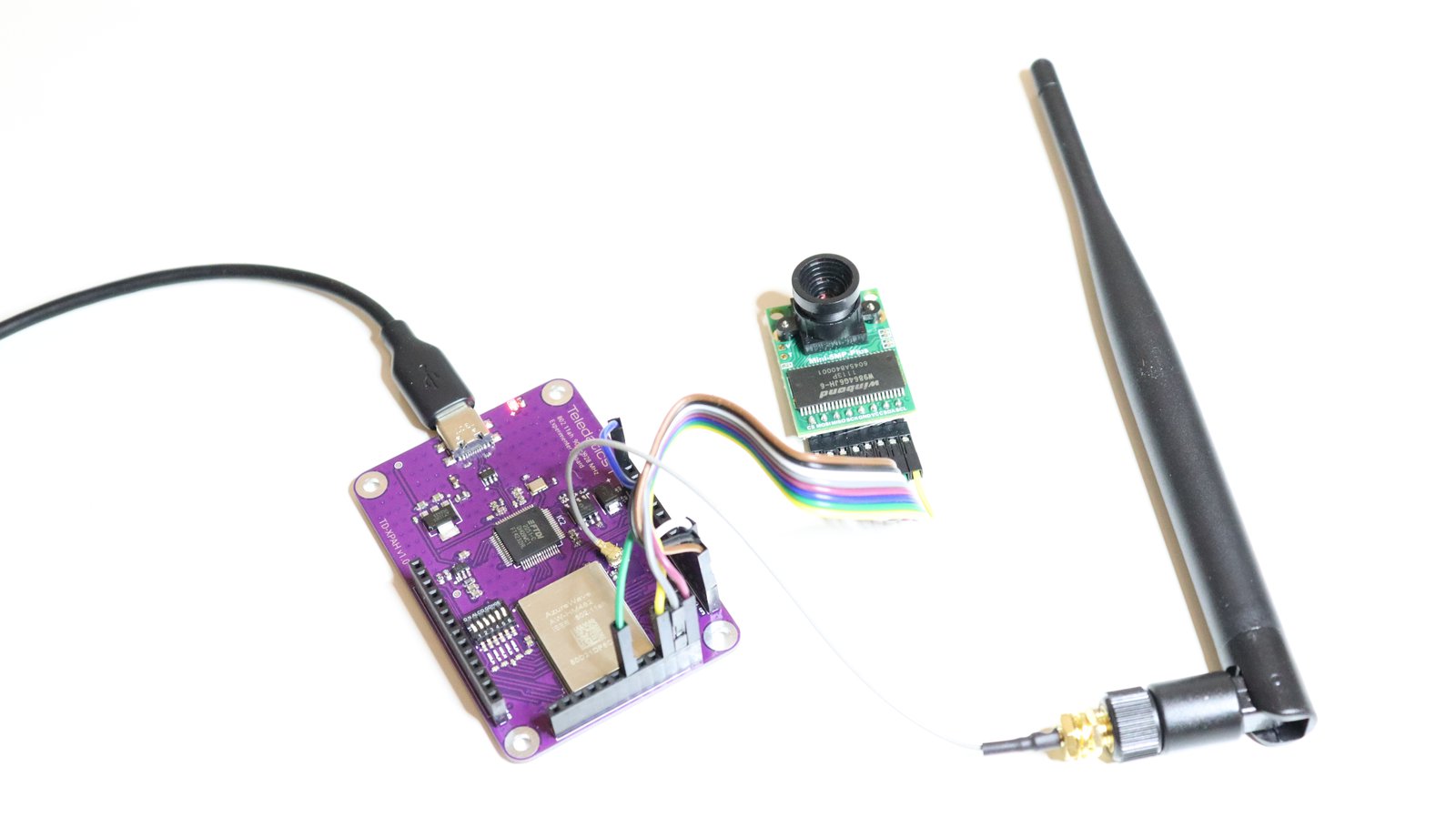
Arducam HD camera attached to the SPI & I2C buses with +5V power
Host several hundred connections simultaneously
The maximum number of clients in traditional 2.4 GHz Wi-Fi is on the order of a dozen or so simultaneously active devices. Above this number the limited RF channel space and medium access contention issues drop available bandwidth dramatically. Wi-Fi 6 pushes this limit to several dozen devices via its expanded channel space in the 5 Ghz and 6 GHz Wi-Fi bands. But even a few dozen clients is often too few for sensor networks and distributed control systems.
The 802.11ah Wi-Fi protocol has been designed to support large numbers of clients. Our partners at Newracom, makers of the nrc7292 802.11ah chip used on the TD-XPAH, have tested well over 370 simultaneously connected clients to a single access point transferring and displaying bitmap images simultaneously.
Additionally, the 802.11ah protocol has introduced the concept of grouping client access into windows. These windows reduce contention of the available bandwidth by spreading client access across the time domain. This restricted access window (RAW) will allow up to several hundred simultaneous clients connected to each access point. To date only the 802.11ah protocol supports RAW mode. Here is a demonstration of Newracom showcasing these capabilities.
Halo TD-XPAH supports true 802.11s mesh networking
Mesh networking is a hot topic for both Wi-Fi and IoT in general. There is some debate as to what constitutes a "true" mesh network, but the gist of the idea is that devices can send data to their neighbors who in turn forward it toward its final destination. This extends the range of mesh networks to multiple hops from a gateway device such as a Wi-Fi access point.
Wi-Fi’s mesh protocol, dubbed 802.11s, became part of the Wi-Fi specification in 2011. It is a "true" mesh network in the sense that it includes a dynamic routing protocol at the mesh level. This means that nodes can come and go as they please and the protocol dynamically re-routes as the network topology changes. This is in contrast to simpler mesh protocols where the network is fixed and a disruption of the topology, such as the failure of a single node, disrupts the network itself. The TD-XPAH platform fully supports 802.11s mesh networks.
Operate with any Wi-Fi mode
Most Wi-Fi hardware products function as either a Wi-Fi client or a Wi-Fi access point. A few offer both features, but these hybrid client/AP platforms usually need to be attached an external system. During the TD-XPAH design phase we made sure that both Wi-Fi client mode and Wi-Fi access point mode are supported. We worked with Newracom, the creators of the 802.11ah chip used in the product, to add driver support to the Linux kernel so that the TD-XPAH can be used as a Linux 802.11ah client or AP over the USB bus.
But why stop there? What about using the TD-XPAH as a standalone product? To solve this, we included support for the FreeRTOS based SDK and standalone mode. The two modes, standalone or USB dongle, are configured via a set of on-board DIP switches. And both modes, standalone or USB, support running as both a Wi-Fi client and a Wi-Fi access point. And, yes, both modes support 802.11s mesh networking as well. We designed the TD-XPAH to be used in any Wi-Fi mode, with or without an external system, configured via on-board switches with mesh networking to boot.
Demo of the TD-XPAH as a USB Wi-Fi Dongle
Utilize hATs to connect with traditional networks
IEEE 802.11ah uses a new set of sub-1 gigahertz frequencies that are incompatible with traditional 2.4 GHz Wi-Fi and Wi-Fi 6. This means that, although 802.11ah is a Wi-Fi protocol and compatible with standard TCP/IP networks, 802.11ah is not available on current devices such as smartphones, tablets or PC’s. While the TD-XPAH can be used as a USB Wi-Fi dongle attached to an external Linux system, such as a PC or Raspberry Pi, attaching to existing networks is complex and requires expert network knowledge.
We are offering a 2.4 Ghz Wi-Fi Gateway hAT and an Ethernet hAT as solutions to attach to common networks and also as examples of how to build TD-XPAH hAT accessory boards. By adding either of these hAT’s to your TD-XPAH device you can connect to traditional networks over either 2.4 GHz standard Wi-Fi or over a standard Ethernet connection.
We also offer an Environmental Sensor hAT that provides remote feedback on air temperature, humidity, carbon dioxide (CO2) levels, and volatile organic compounds (VOC) levels.
Features & Specifications
- 902 - 928 MHz Wi-Fi 802.11ah
- ARM Cortex-m0 & Cortex-m3 MCUs
- 752K RAM
- 2MB flash
- USB-C power & communications
- 4x I2C
- 2x SPI
- 4x UART
- 8x PWM
- 6x high precision timers
- 4x 9-bit ADC
- 32x GPIO
- 3x watchdog timers
- RTC
- Temperature sensor
- XIP from flash w/ 32K RAM cache
- 10-pin ARM JTAG interface
- Open source software
- Open hardware accessory board
- 3D printable enclosure STL file available on Thingiverse
Comparisons
| Lora | NB-IoT | Sigfox | Zigbee | Bluetooth | 5 GHz Wi-Fi | 2.4 GHz Wi-Fi | 802.11ah |
| Signal Range | Very High | Very High | Very High | Medium | Low | Low | Medium | High |
| Power Consumption | Low | Low | Low | Low | Very Low | Medium | Medium | Low |
| Recurring Fees | No | Yes | No | No | No | No | No | No |
| TCP/IP | No | Yes | No | Yes² | Yes³ | Yes | Yes | Yes |
| Throughput in Mbps | Very Low | Low | Very Low | Low | Low | Very High | Very High | High |
| Dynamic Network Topology | Yes | Yes | No | No | Yes | Yes | Yes | Yes |
| Client Connectivity | Very High | Very High | High | Medium | Medium | Medium | Low | Very High |
| Proprietary Protocol | Yes | Yes | Yes | No | No | No | No | No |
| Mesh Capable | No | No | No | Yes⁴ | Yes | Yes | Yes | Yes |
| Security | Low | High | Low | Low | Low | High | High | Very High |
| Cost | Low | Low | Low | Low | Low | Medium | Medium | Medium¹ |
¹ Cost is rapidly decelerating
² Via 6LowPan
³ Limited or no BT network support in many devices
⁴ Fixed mesh with a single active gateway
Support & Documentation
Manufacturing plan
Our CM will produce the PCB and populate it with all hardware with the exception of the FTDI USB-SPI/UART chip and the Newracom nrc7292 Wi-Fi module. We have built a custom PnP machine & solder paste printer to place these two chips and mount them with our in-house reflow system. Due to the current chip shortage, these chips are currently not available to CM’s so we negotiated supply for the CS campaign directly with the manufacturers, FTDI and Newracom. As chip supply issues ease, our CM will take over mounting these chips, but we do not anticipate this occurring until the end of 2022.
The three accessory boards: 2.4 GHz Wi-Fi Gateway, Ethernet, and Air Quality Sensor, will be produced by our CM and shipped directly to us.
Fulfillment & Logistics
The FCC ISM unlicensed spectrum for IEEE 802.11ah Wi-Fi is 902 - 928 MHz. We currently only support these frequencies. The EU allocates 860 - 868 MHz for 802.11ah. Because it is subject by CE restrictions, the Halo TD-XPAH cannot be shipped to EU countries, the UK, Norway, Iceland, or Liechtenstein. Depending on interest, we may launch a global, follow-up campaign for a CE-certified version of the Halo TD-XPAH. All orders will be shipped by Crowd Supply via their logistics partner, Mouser Electronics. The TD-XPAH and accessory board products will be placed in individual anti-static shielding bags and shipped in a secure box for protection during shipping. For more information, you can refer to this useful guide to ordering, paying, and shipping. You can confirm and update your order details and more in your Crowd Supply account.
Risks & Challenges
The chip shortage is posing risks to the industry as a whole. Thankfully, we have worked ahead to mitigate these risks through several strategies. First, we have designed our boards using commonly available components to our circuitboard manufacturer. We are monitoring the supply amounts closely, and if necessary, we are open to re-designing the board in order to use available substitutes. The two most critical chips currently have a 52-week plus lead time. In order to prevent fulfillment delays, we have secured chips directly from FTDI and Newracom to build up to one thousand devices. We can increase this amount if the campaign warrants it.
